Workshops bring the key people in a company together at the same time. The results are always better and more quickly achieved through workshops than any other method. I have facilitated workshops to achieve almost anything for a company, from strategy, alignment, idea generation, research, naming, and many other things. This case study shares a successful naming workshop that I designed and facilitated.
Brand Name Workshops: A Workshop Education Platform
Our marketing agency decided to launch a workshop education platform. Workshops had worked wonders for our clients (see the example above for a small insight into that) and we wanted to spread the word. When we needed a name, it was only natural that I decided to create and facilitate a naming workshop.
I shared an excellent example of a workshop warm-up exercise in my case study for NBG’s brand name workshop. I’ll move straight onto Part One of this workshop here because there’s a lot to get to. The purpose of the warm-up is always the same though: create a positive atmosphere at the start of a workshop that gets people out of their comfort zones while intelligently relating to what the workshop wants to achieve.
Part One: Brief
The participants in the session were very aware of why we were there. But it’s important to focus people’s attention on the task at hand. When a brief is created properly, it covers essential parts that guide the participants into the correct mindset. Also, it’s never a terrible idea to shift attention back to the purpose of the session after an enjoyable warm-up activity.
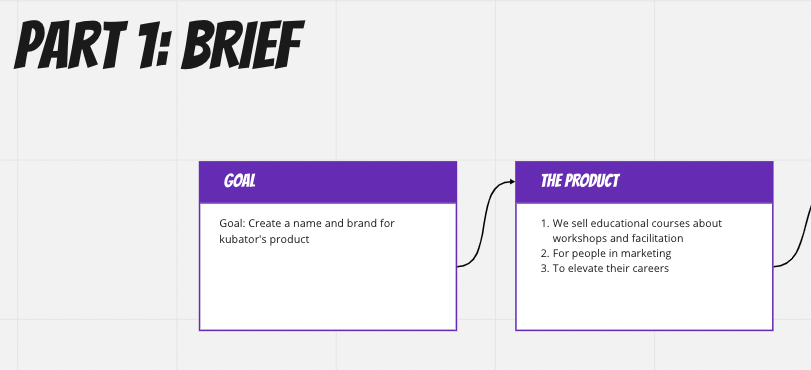
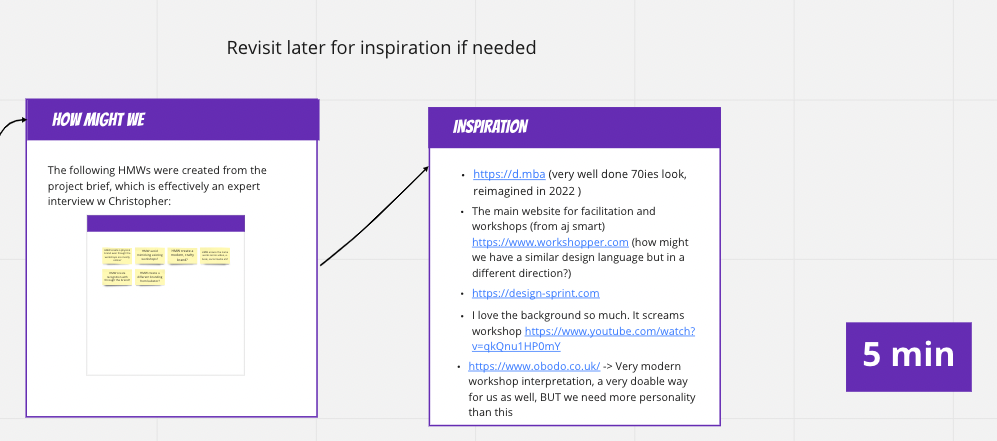
Part Two: Lightning Demos
This activity is a structured research session for the group to find ideas and inspiration before we begin to look into our own solutions. People can explore ideas from another industry, but the best suggestions are often ideas from organizations that have accomplished the same thing that the workshop wants to achieve.
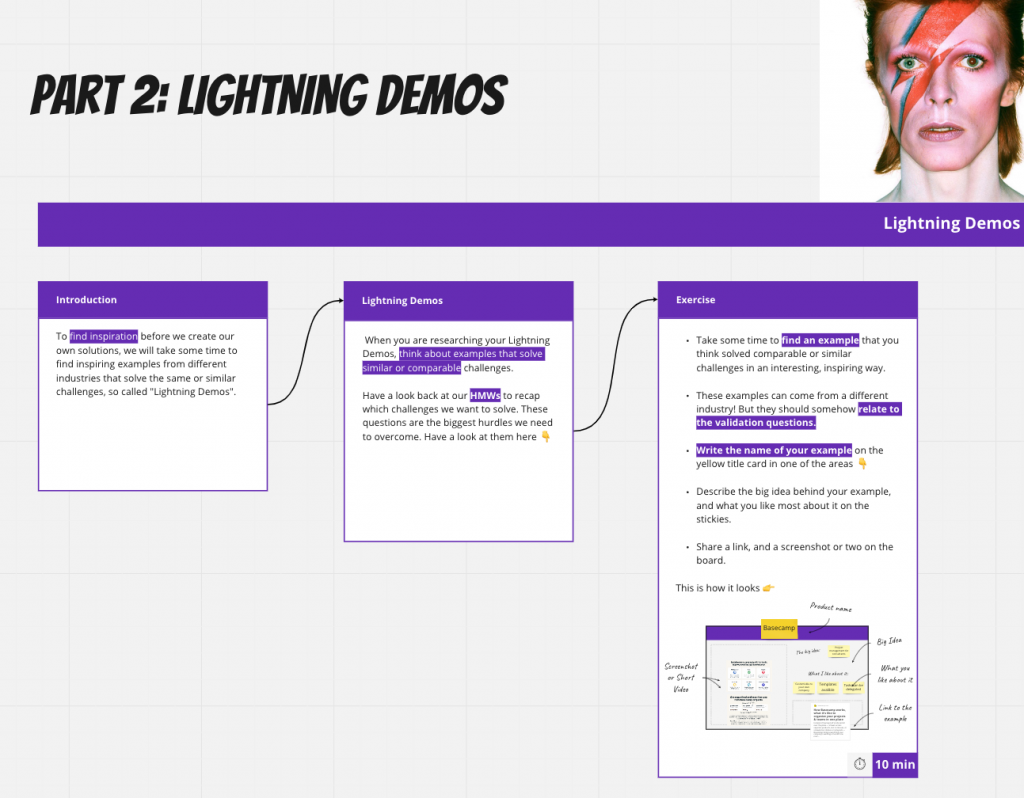
Here’s the workspace. It was important to let everyone know that they were free to come up with as many examples as they could within the time frame.
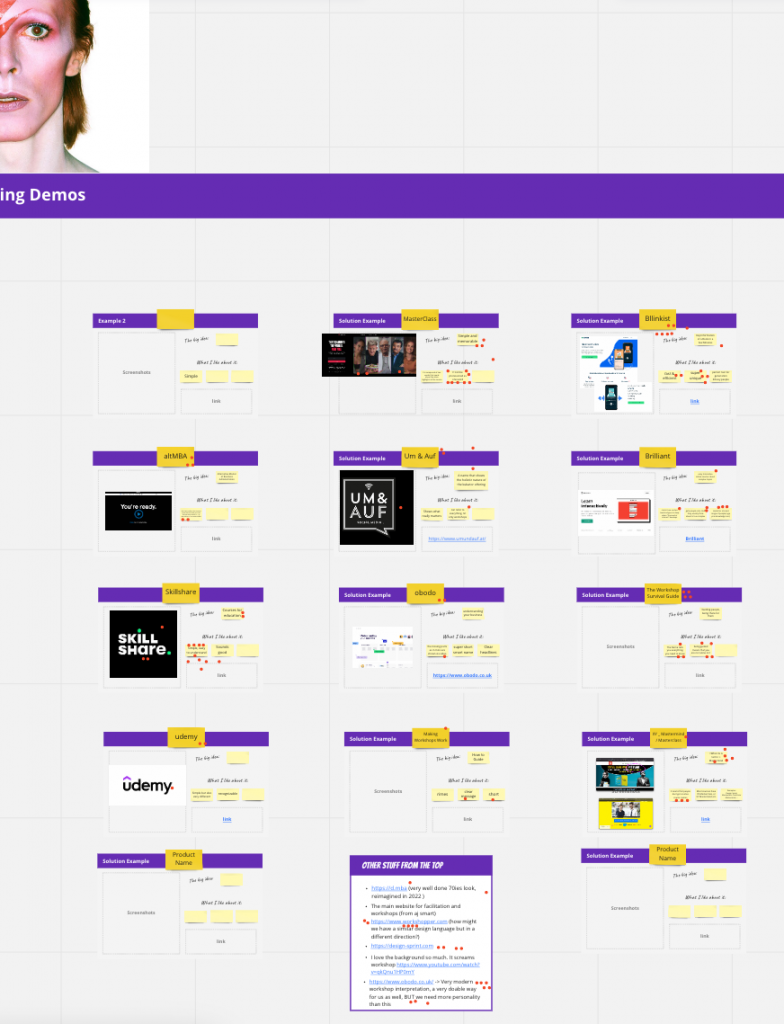
Here’s a close-up of one participant’s Lightning Demo. The dots indicate the parts of the idea that everyone liked.
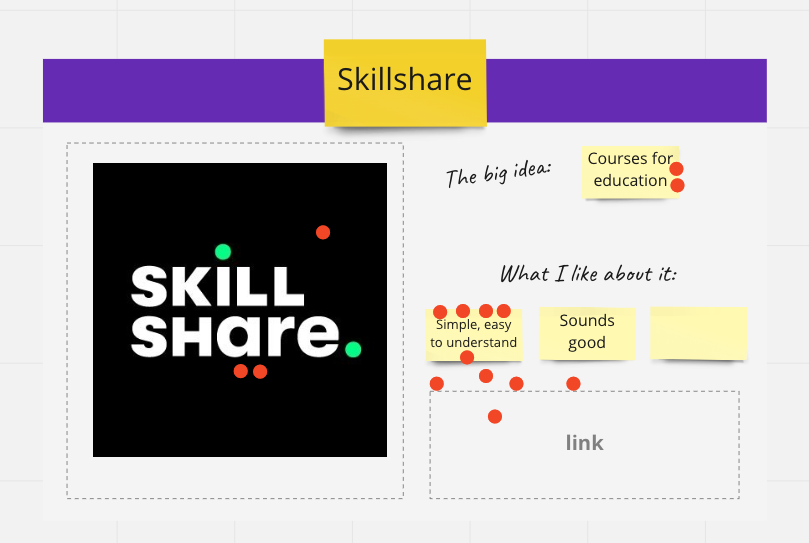
This vote was completely free. Participants had 5 minutes to place as many red dots over any idea (or specific parts of an idea) that they wanted. The purpose was to create a heat map of the most popular demos.
Part Three: Names
The workshop is beginning to build momentum now. This is a very important part because it’s where we’ll gather all the potential names for the product. The workshop process does so much heavy lifting, but it still depends on the participants coming up with excellent material during these activities.
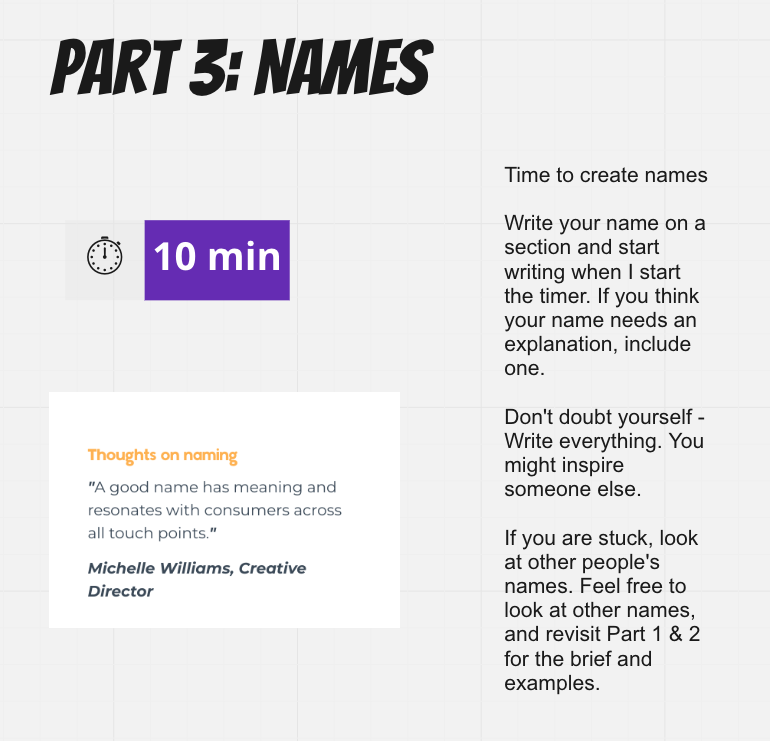
Here’s an example of one of the workshop spaces for this part.
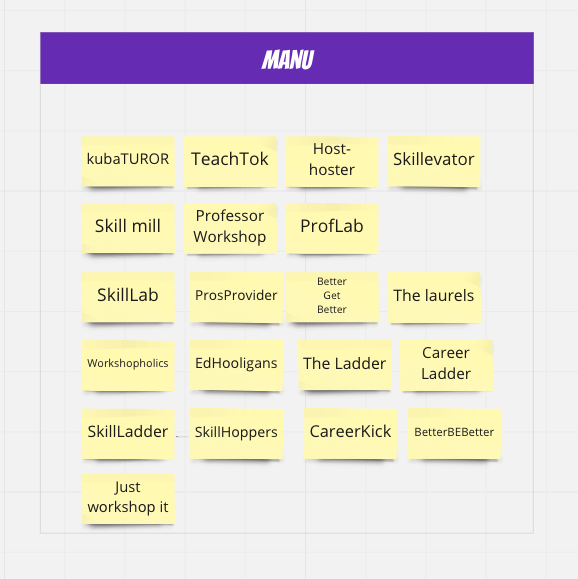
I created an additional stage in this naming workshop. It would help to sort the names by category before voting on them. I created the following headings with helpful descriptions:
- DESCRIPTIVE NAMES: Descriptive, literal, names leave nothing to the imagination, they help explain what you do. British Airways, Carphone Warehouse, Burger King, WeBuyAnyCar.com, Land Rover
- EMOTIVE NAMES: Designed to evoke an emotional response, emotive names are based on the feelings a customer has when they use your product or service. Innocent Drinks, Freederm
- ABSTRACT NAMES: Made-up names, complete works of fiction, but if it sounds right then why not. There’s more chance of a made-up name being available. Spotify, Kodak, Dulux
- ORIGIN NAMES: Names based on origin are derived from the history, location, or provenance of the business – for example the founder’s name or where the business first started. McDonald’s, Ford, Dyson, John Deere, Kensington Tea
- COMPOUND NAMES: Combine two or more words, or parts of words, to form a single word. Facebook, Instagram, FedEx, Weetabix, Microsoft
- ACRONYMS AND INITIALS: Often descriptive and meaningless. 3M, H&M, IBM, WPP, IKEA, BMW
- PLAYFUL NAMES: Often these names have no direct relation to a company’s business, but they are memorable and fun. Funky Piegon, Moonpig
- METAPHORICAL NAMES: Names based on metaphors tap into the visual elements of a brand. Nike, Gorilla Glue, Amazon, Jaguar, Orange
The additional level of information was beneficial for the voting, and it made the voting process anonymous.
Part Four: Decide
Workshops are great at visualising abstract things. The heat-map tree is a quick visual representation of the most popular ideas. Every suggestion that had at least one vote was transferred across to the heat-map tree.
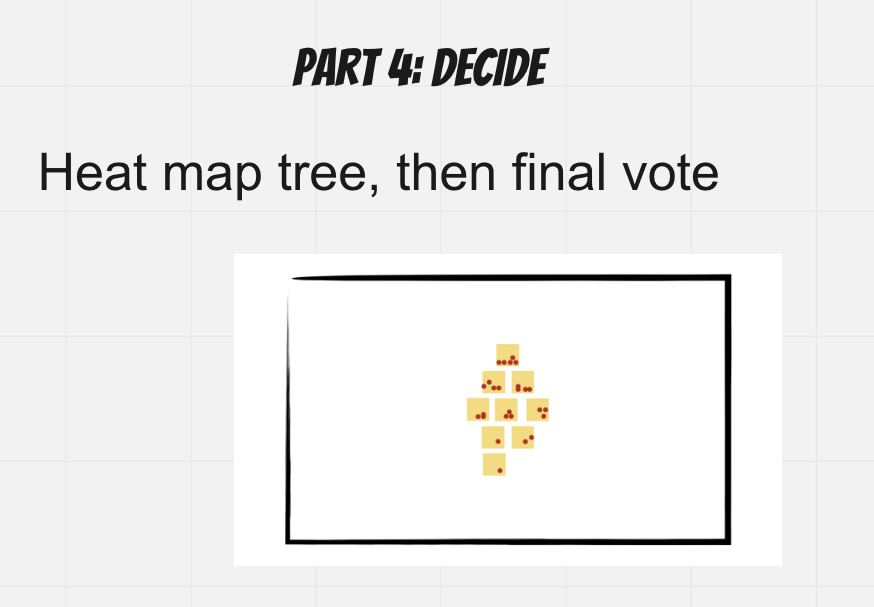
Here are the group’s suggestions displayed as a heat-map tree.
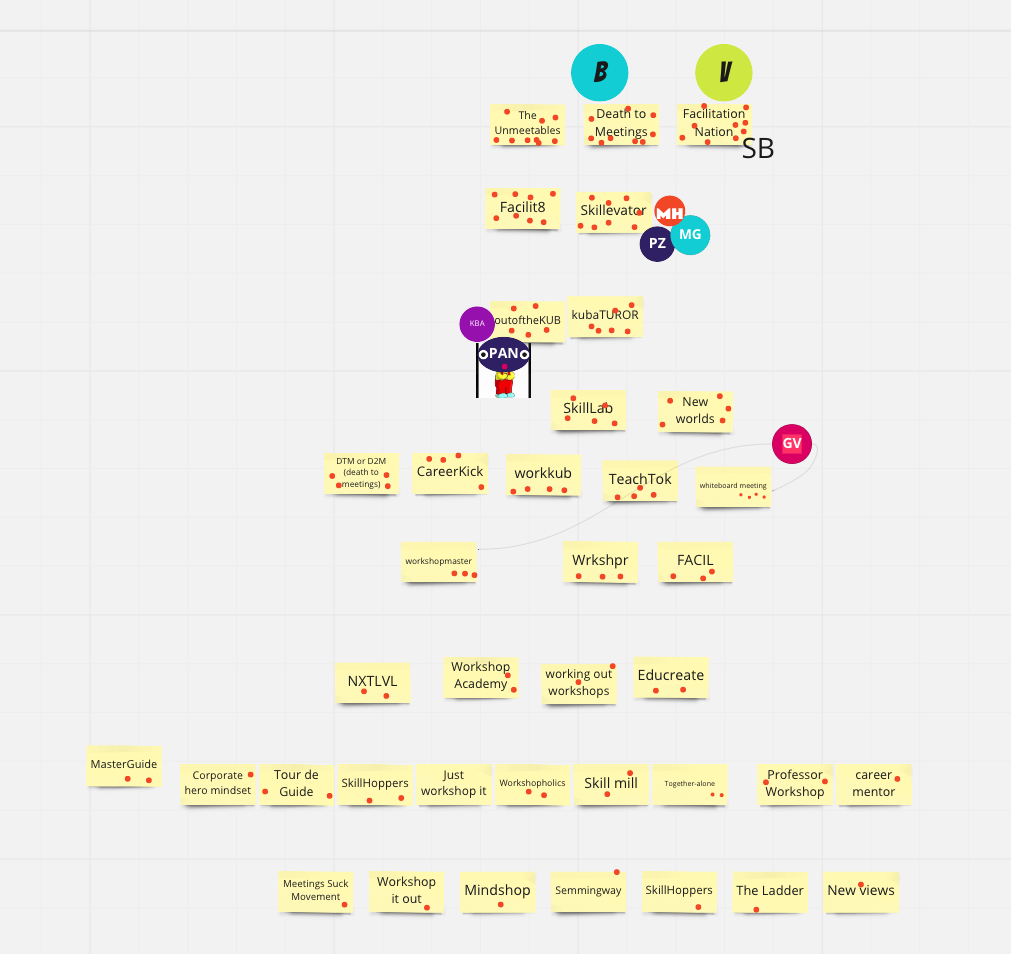
Although the participants had identified a couple of popular suggestions, the decider in the workshop wasn’t happy with the suggestions and wanted to see more.
Every workshop has a designated ‘Decider’ who is responsible for providing final approval. Some participants may feel disheartened about their ideas not being chosen, especially when most of the team has voted for them. Still, this scenario is much better than the concept being dismissed further down the line after the team has invested meetings, research, and creative hours into turning the idea into a draft.
I arranged a new session for the following week to come up with a second round of names.
Part Five: Off-Board Naming
I created a new section on the Miro board for people to submit new ideas before the next session. There are cases when workshop participants are encouraged to come up with material outside of the sessions. I felt that this would be an excellent opportunity to invite people to spend some time on the task in their own time.
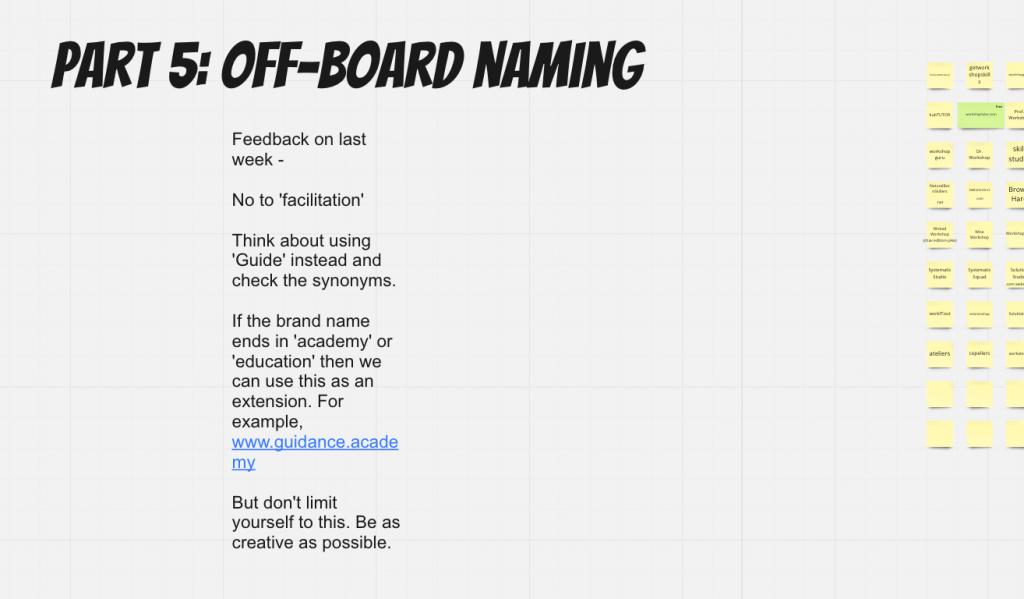
Part Six: More Names
I repeated the naming exercise but reminded the participants why the previous names didn’t work. I gave them a little guidance but not too much to restrict their creativity.
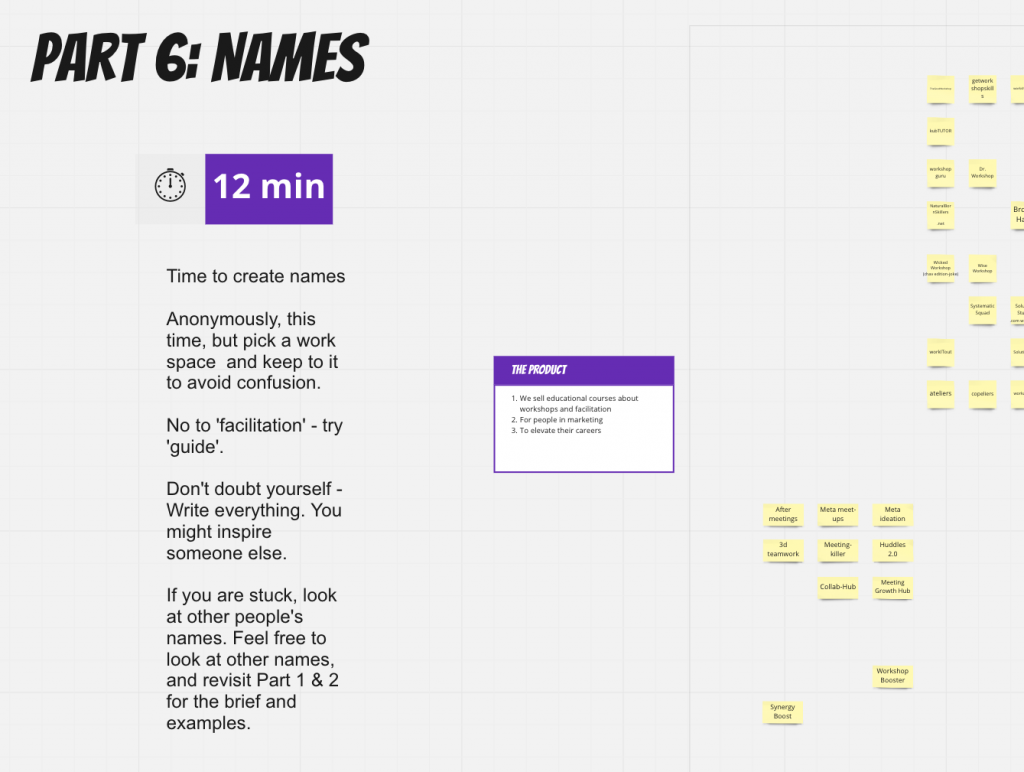
Part Seven: Decide Again!
I repeated the decision-making process with the new names.
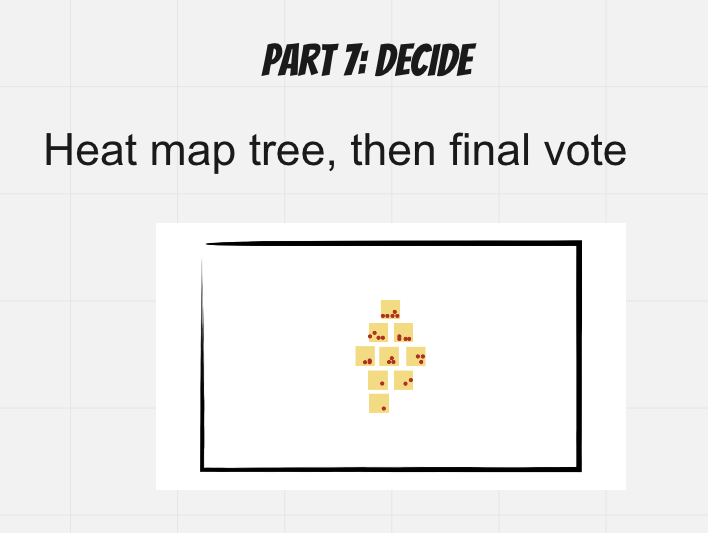
And here are our final suggestions:
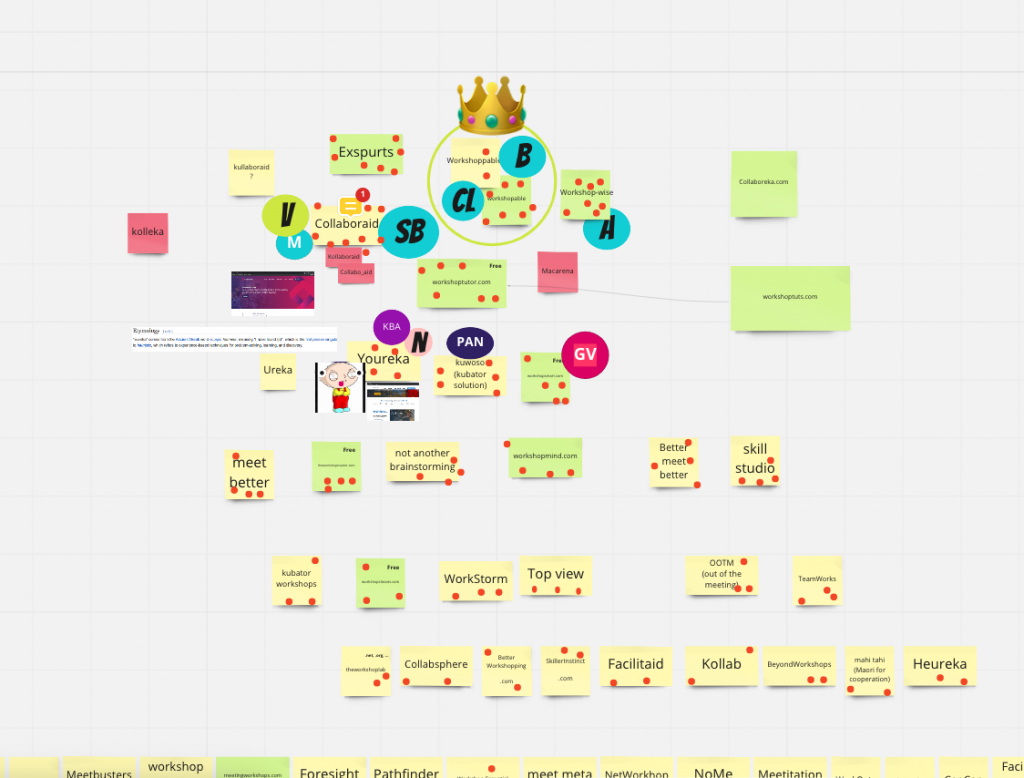
Although the team voted on different ideas, the decider voted for a suggestion and we had our name: Workshoppable.

